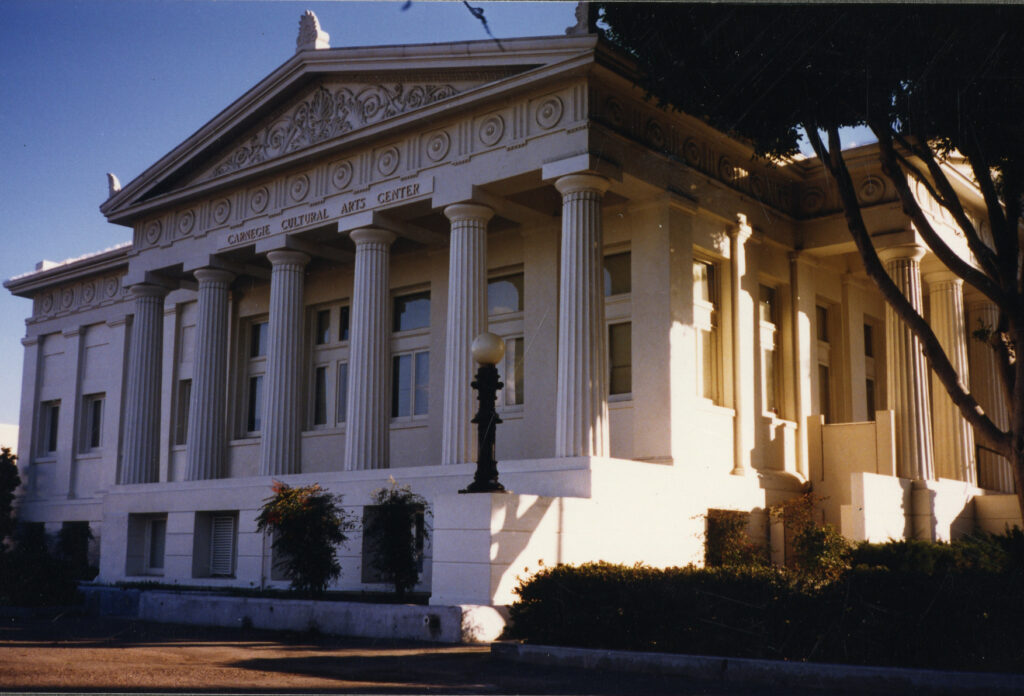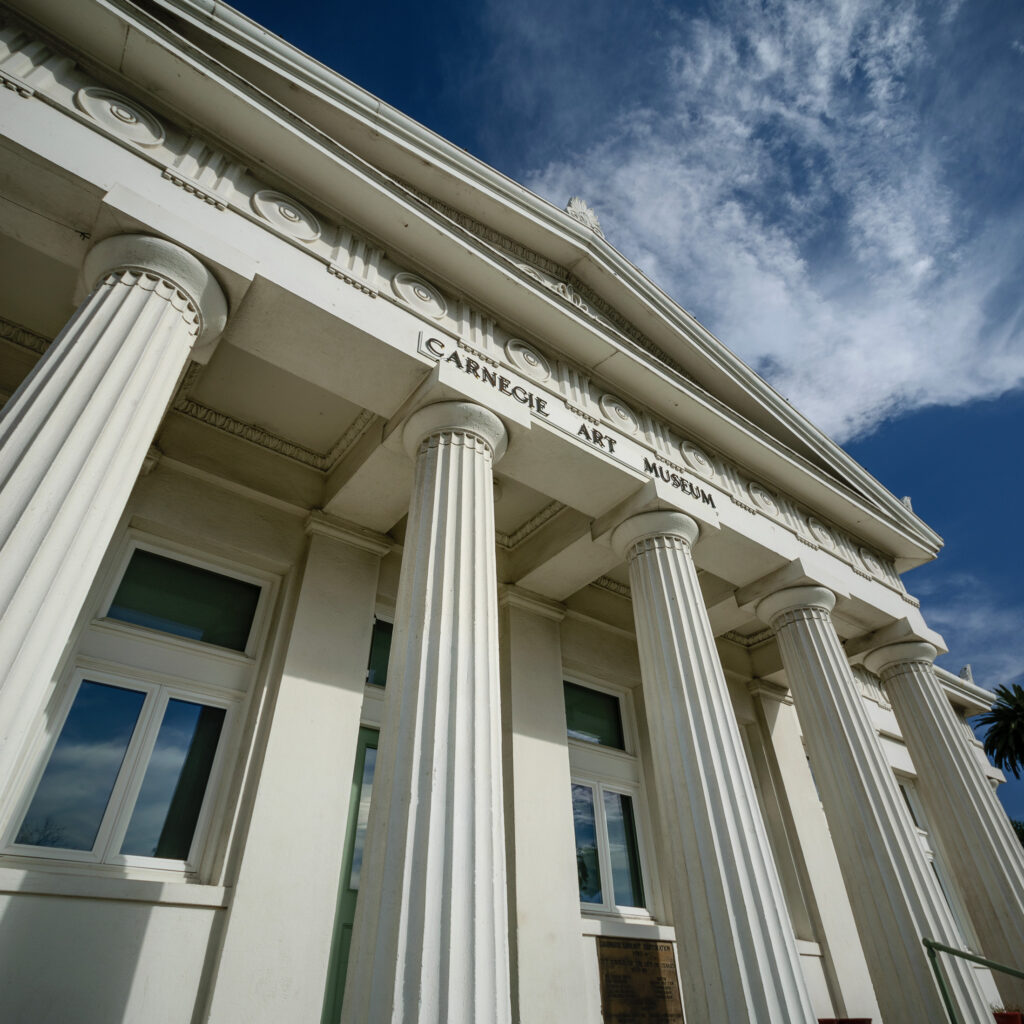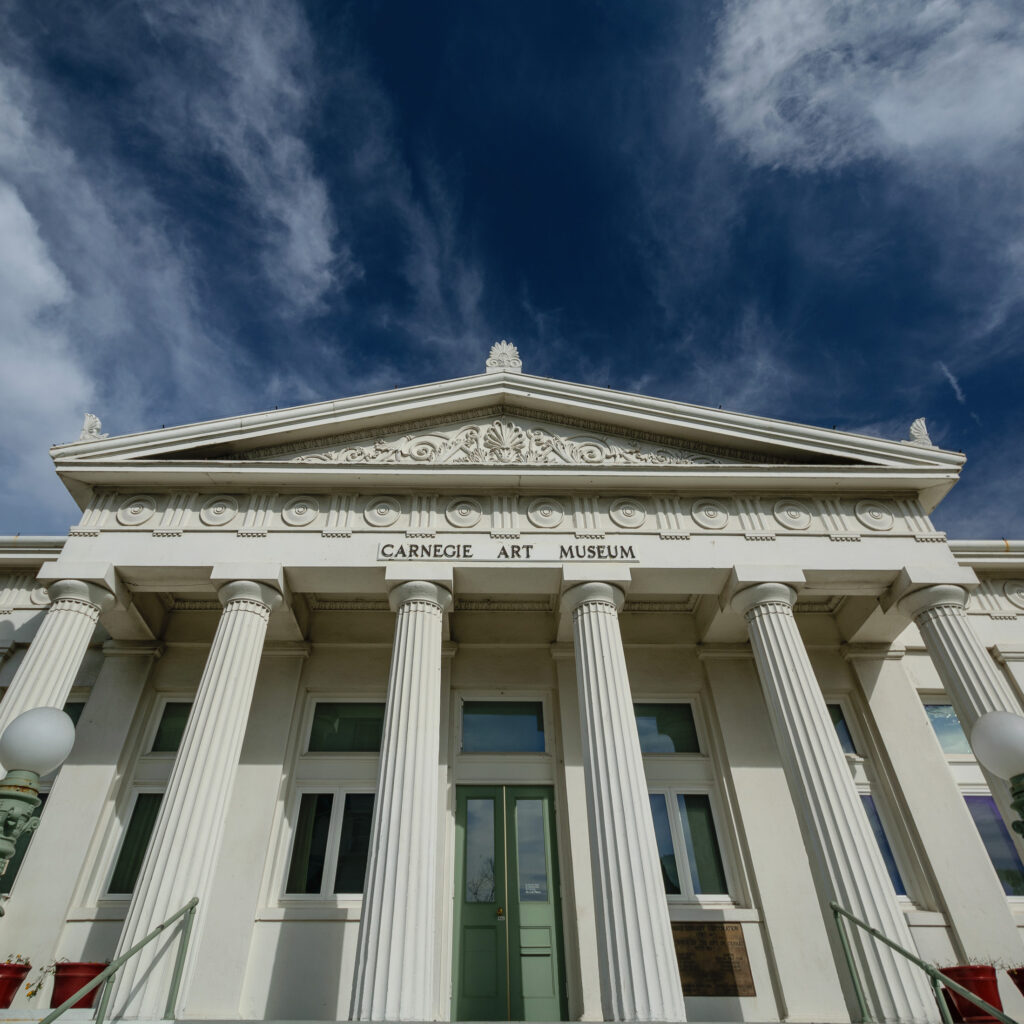Ventura County Landmark No. 13: Oxnard Carnegie Library
Historical Background
The Oxnard Carnegie Library was the first library in the new city of Oxnard and was one of nearly 1,700 free public libraries in the United States funded by philanthropist Andrew Carnegie, an immigrant to the United States who made his fortune in the steel industry. His foundation donated $12,000 in 1906 for this building and an additional $5,500 was raised by prominent citizens to cover excess costs, as well as the lot at Fifth and C streets. In addition, the city was required to fund $1,000 per year to maintain the building (Carnegie Libraries of California, 2009).
The classical Greek architecture was the choice of Richard Haydock, Oxnard’s first mayor, who applied for the Carnegie funds. With its wide central pedimented porticos, each supported by six Doric columns, the Oxnard Carnegie gives the impression of a massive temple on a hill. However, it is in fact a relatively small, white building, whose appearance is further enhanced by the tree-shaded Plaza Park nearby (Carnegie Libraries of California, 2009).
Well known Los Angeles architect Franklin P. Burnham designed the building, and it was constructed by Thomas A. Carroll. The building served as a library until 1963 and the lower floor was the city hall until 1949. The building was enlarged in 1923 to expand its holdings. After a new library was constructed in 1963, the Carnegie was used by the Chamber of Commerce, Visitors Bureau, and Art Club. In 1978, it was renovated and reopened in 1980 as the Carnegie Cultural Arts Center, now the Carnegie Art Museum (Carnegie Libraries of California, 2009).
The building was designated as Ventura County landmark No. 13 and placed on the National Register of Historic Places in 1971, the first California Carnegie library to be so recognized (Carnegie Libraries of California, 2009).
Carnegie Libraries of California
On April 23, 1902, California’s first Carnegie library opened in San Diego, an outstanding example of the Classical Revival style. Nineteen years later, on November 15, 1921, in the small community of Orosi, the last of California’s 142 public and two academic Carnegie libraries was completed. The Orosi Carnegie library is still in use today as a branch library in the Tulare County Free Library System. It is a simple frame structure and sits in contrast to the ornate San Diego building, illustrating the wide range of architectural styles that were used in constructing Carnegie libraries between 1902 and 1921 (Carnegie Libraries of California, 1999).
California is second only to Indiana in the number of grants to construct Carnegie library buildings. The libraries were built from Alturas in the north to Calexico in the south. Each library, large or small, represented a significant commitment by the people in the community. The Carnegie grant was to be used to construct the building, while the community was expected to provide a site and to tax itself at the annual rate of 10% of the grant amount for the purchase of books and for staffing and upkeep of the library (Carnegie Libraries of California, 1999).
As of 1999, only 85 of the original Carnegie public library buildings are still standing. Of these, 36 are still operating as libraries, 21 are museums, 13 are used for community services, and the remaining 15 range in use. The two academic Carnegies are still used by their colleges as classroom and administration spaces. These buildings, regardless of their use, are an important part of California’s architectural heritage (Carnegie Libraries of California, 1999).
Additional Reading
References
Carnegie Libraries of California (1999). About this Project: the Carnegie Libraries of California. https://www.carnegie-libraries.org/about.html.
Carnegie Libraries of California (2009). Oxnard, Ventura County. https://www.carnegie-libraries.org/california/oxnard.html.
Date Designated: February 1971
Location: 424 South C Street, Oxnard
Photos:






